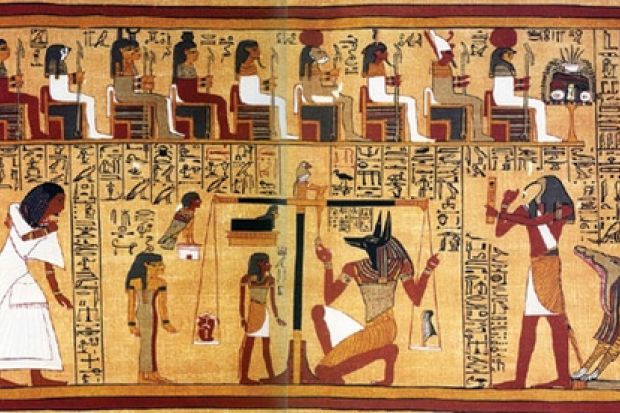Journey through the Afterlife: Ancient Egyptian Book of the Dead
The British Museum, London, until 6 March 2011
The British Museum's superb new exhibition includes many astonishing objects, notably the world's longest-surviving Book of the Dead, known as the Greenfield Papyrus, which extends through a series of display cases for nearly 40m. The genre developed over 1,500 years, with spells incorporated into richly illustrated manuscripts complete with graphic scenes of ibises, obelisks, mourning women, elaborate funerary processions, priests with panther-skin cloaks and the crucial moment of the Opening of the Mouth, when life was breathed back into the mummified corpse as into a newborn baby.
Yet even within this vividly realised world, there is something particularly startling about the game of senet.
The name means "passage" or "passing". It was played on a board of 30 squares, of which carved wooden and damaged stone examples are on display. Illustrations make it clear that players used knucklebones for dice and moved counters, so it was probably a bit like backgammon.
Chess is a game of battle, but the inscriptions on the squares make it clear that senet was a game of life and death, with the players' moves representing the path of the sun god through the night and the soul's passage from death to new life. Even odder are the satirical images showing animals such as a gazelle and a unicorn playing this symbolic game.
Senet acts as a metaphor for the whole exhibition. Visitors walking through it are also, in a sense, retracing a strange spiritual journey, and it sometimes feels like stepping into a medieval quest or even a computer game.
Following in the footsteps of the dead, we proceed from mummification and burial in a tomb surrounded by protective figures such as baboons and turtle-headed deities, through the weighing of the heart and protestations of innocence to eventual residence in the lush, well-watered Field of Reeds.
En route, one is required to outwit monsters, whether by shaking a knife at a crocodile or cursing a snake with the words: "take yourself off ... for you have eaten a mouse, which Ra detests, and you have chewed the bones of a putrid cat". Another spell is specifically designed to avoid the typical after- life punishments of eating faeces and drinking urine.
The imagery is stunning: the elaborate feast table of duck, ox leg, bread and wine that a couple have assembled as an offering to Osiris; a woman with feathers in her hair raising her hands in triumph after her heart has been weighed; another reunited with her parents after death; a god paddling his boat across the Lake of Offerings.
Yet much of it is haunting and puzzling in roughly equal measure. The elaborate catalogue supplied by curator John H. Taylor should help to unravel at least some of the many enigmas.
Register to continue
Why register?
- Registration is free and only takes a moment
- Once registered, you can read 3 articles a month
- Sign up for our newsletter
Subscribe
Or subscribe for unlimited access to:
- Unlimited access to news, views, insights & reviews
- Digital editions
- Digital access to THE’s university and college rankings analysis
Already registered or a current subscriber? Login
